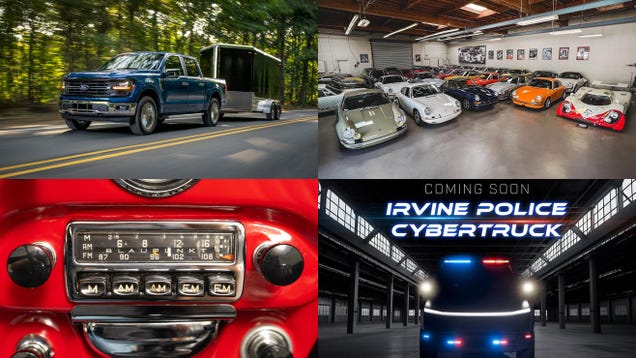Advancements in Automotive Technology: What You Need to Know
The automotive industry is undergoing a remarkable transformation, with technology evolving at an unprecedented pace. From hands-free driving systems to sophisticated in-car entertainment options, today’s vehicles are equipped with features that enhance safety, convenience, and the overall driving experience. However, as technology becomes more integrated into our cars, questions arise about its practicality, usability, and impact on the driving experience. This article delves into the latest advancements in car technology, addressing common concerns and providing insights into how these innovations are reshaping our roads.
Enhancing Safety with Hands-Free Driving Technology
One of the most talked-about advancements in automotive technology is hands-free driving. Systems like Ford’s BlueCruise and GM’s Super Cruise allow drivers to take their hands off the wheel under certain conditions, enabling a more relaxed driving experience on highways. According to a study by the Insurance Institute for Highway Safety (IIHS), these systems can significantly reduce the risk of accidents by allowing drivers to maintain better focus on the road ahead.
However, the effectiveness of hands-free technology is not without its challenges. While it can provide a sense of relief during long drives, it requires drivers to remain vigilant and ready to take control at any moment. A survey conducted by J.D. Power revealed that many drivers are skeptical about the reliability of such systems, with 60% expressing concerns about the technology’s ability to handle unexpected road conditions. As manufacturers continue to refine these systems, addressing user concerns about safety and reliability will be crucial for widespread acceptance.
The Rise of In-Car Entertainment Systems
In-car entertainment has also seen significant advancements, with manufacturers integrating larger screens and more interactive features into their vehicles. A recent report by Statista indicates that the global in-car entertainment market is expected to reach $30 billion by 2025, driven by consumer demand for connectivity and multimedia options. Features such as streaming services, voice recognition, and smartphone integration have become standard, catering to a tech-savvy audience that values entertainment on the go.
However, the proliferation of screens in vehicles raises questions about driver distraction. The National Highway Traffic Safety Administration (NHTSA) has warned that excessive screen time can divert attention from the road, potentially leading to accidents. To mitigate these risks, manufacturers are exploring solutions such as gesture controls and voice commands, allowing drivers to interact with their entertainment systems without taking their eyes off the road.
Understanding User Needs and Preferences
While the advancements in car technology are impressive, not all drivers embrace these innovations. A study by AAA found that nearly 70% of drivers feel overwhelmed by the technology in their vehicles, often leading to frustration rather than convenience. This disconnect highlights the importance of user-centered design in automotive technology. Manufacturers must prioritize intuitive interfaces and clear instructions to ensure that drivers can easily navigate the features available to them.
Moreover, as electric vehicles (EVs) gain popularity, the integration of technology in these cars presents unique challenges and opportunities. EVs often come equipped with advanced features such as regenerative braking and energy management systems, which can be daunting for new users. Educating consumers about these technologies and their benefits will be essential in promoting EV adoption and ensuring a positive user experience.
The Future of Automotive Technology
Looking ahead, the future of automotive technology promises even more exciting developments. With the rise of artificial intelligence and machine learning, vehicles are becoming smarter and more capable of adapting to their environments. For instance, advancements in predictive analytics could allow cars to anticipate maintenance needs, enhancing reliability and reducing downtime.
Furthermore, the ongoing development of autonomous vehicles holds the potential to revolutionize transportation as we know it. Companies like Waymo and Tesla are at the forefront of this movement, investing heavily in research and development to create fully autonomous driving systems. While regulatory and ethical considerations remain, the prospect of self-driving cars could significantly reduce traffic accidents and improve overall road safety.
In summary, the rapid evolution of automotive technology presents both opportunities and challenges for drivers. As manufacturers continue to innovate, it is crucial to prioritize safety, usability, and user education to ensure that these advancements enhance the driving experience rather than complicate it. By addressing concerns and focusing on user needs, the automotive industry can pave the way for a safer, more enjoyable future on the road.

